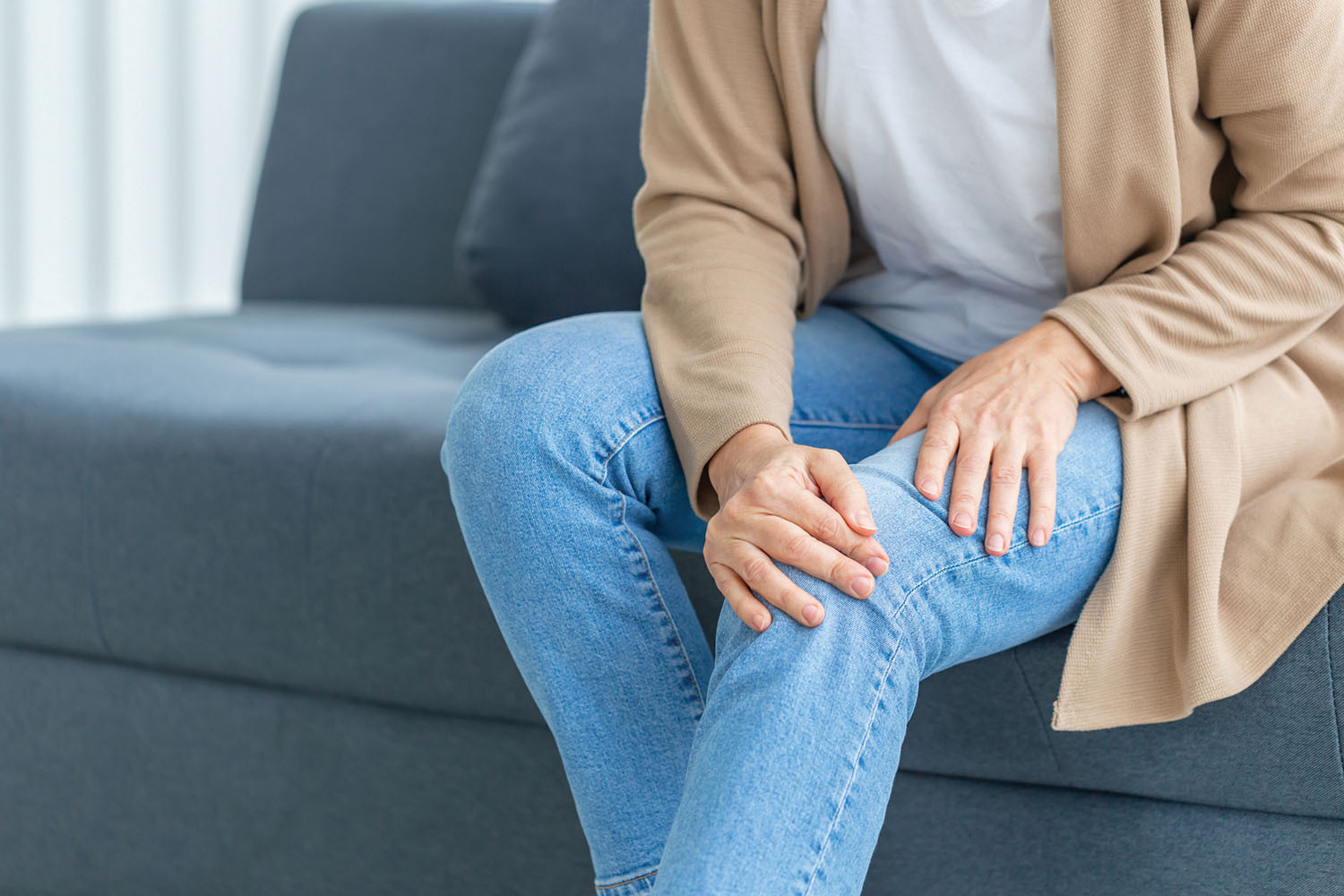
What can magnesium do for you and how much do you need?

Dry socket: Preventing and treating a painful condition that can occur after tooth extraction

What happens during sleep �� and how to improve it

How is metastatic prostate cancer detected and treated in men over 70?

Could biofeedback help your migraines?

Plantar warts: Options for treating this common foot condition

Cancer survivorship: What comes next after treatment

Nutritional yeast: Does this savory, vegan seasoning pack a nutritional punch?

Salmonella is sneaky: Watch out

Two jobs may lower the odds of dying from Alzheimer's disease �� but why?
Bone, Joint & Muscle Health Archive
Articles
What triggers weather-related joint pain?
Many people say they feel joint pain that arrives with cold or damp weather. While research hasn't confirmed why, changes in barometric pressure can place pressure on joints that may lead to aches.
Should I stop cracking my knuckles?
People may relieve anxiety by cracking knuckles or other joints. Usually it's a harmless habit, but people with joint problems like arthritis should refrain, since doing so might worsen symptoms.
Get a lift from body-weight workouts
Body-weight exercises are ideal substitutes for regular workouts when people are short on time or looking to shake up their usual routine. These types of exercises are not only versatile—as they can be done anytime, anywhere, without any equipment— but they also help improve everyday movements by activating the smaller stabilizing muscles that sometimes get missed when a person uses gym machines or dumbbells.
Relieve low back pain with stretching
Stretching the muscles that support the spine can help alleviate persistent or recurring low back pain. The muscles to stretch include the erector spinae muscles along the spine, the iliopsoas muscles connecting the spine to the lower limbs, and the abdominal muscles in the front of the body that help prop up the torso. Other muscles that support the back include those in the front of the hips, back of the thighs, and buttocks. An example of a back stretch is lying on a bed and pulling the legs close to the chest for half a minute.
Beyond hot flashes
Around menopause, a decline in estrogen can trigger low-grade inflammation that leads to unexpected symptoms from head to toe. Symptoms can affect the digestive tract, skin, joints, eyes, ears, and heart, among other areas. A 2022 study found that estrogen loss can even fuel the jaw pain known as temporomandibular disorder. A year or longer can pass before many women connect symptoms with menopause. Women can take lifestyle measures to lower inflammation, such as eating more fruits and vegetables, avoiding processed foods, and exercising.
Punch up your fitness
Non-contact boxing has been shown to help many people with Parkinson's disease improve their balance, hand-eye coordination, mental focus, muscle strength, and body rhythm. Older adults also can benefit from this type of exercise, as they face many of the same physical and mental challenges as they age. Most boxing fitness workouts are done using punching bags and hitting oversized boxing mitts worn by coaches. The moves involve punches and sequences based on crosses, hooks, uppercuts, and jabs.
Poor handgrip strength in midlife linked to cognitive decline
A large study published online June 23, 2022, by JAMA Network Open found that poor handgrip strength in midlife was associated with cognitive decline a decade later.
Simple core strengtheners for every day of the week
It's safe to work the core every day for about 10 to 30 minutes, as long as a person doesn't develop intense muscle fatigue. There are so many kinds of core-strengthening activities that it's possible to do a different one each day of the week. Ideas include marching, practicing yoga, doing body-weight workouts, exercising in a pool, and doing housework. Before a core workout, a person should do a warm-up, such as walking, to get blood flowing to the core muscles. After exercising, it's important to stretch the core muscles to help lengthen them and keep them flexible.
Not-so-sweet slumber
Morning back and neck pain are often triggered by sleep position or poor choice of mattress or pillow. Certain sleep poses, especially stomach-down, can lead to pain by creating misalignment of the spine and other areas of the body. To prevent back and neck pain, people can switch sleep positions frequently, align all body areas when shifting positions, use firmer pillows, consider buying a new mattress, and place a foam wedge under the pelvis or between the legs while sleeping.
You don't say? Can your joints wear out?
Joints do not wear out from overuse. Osteoarthritis, the most common type of arthritis, occurs when the smooth cartilage that lines the joint deteriorates. This might occur because of an injury, age, family history, obesity, or a disease that causes joint inflammation.

What can magnesium do for you and how much do you need?

Dry socket: Preventing and treating a painful condition that can occur after tooth extraction

What happens during sleep �� and how to improve it

How is metastatic prostate cancer detected and treated in men over 70?

Could biofeedback help your migraines?

Plantar warts: Options for treating this common foot condition

Cancer survivorship: What comes next after treatment

Nutritional yeast: Does this savory, vegan seasoning pack a nutritional punch?

Salmonella is sneaky: Watch out

Two jobs may lower the odds of dying from Alzheimer's disease �� but why?
Free Healthbeat Signup
Get the latest in health news delivered to your inbox!
Sign Up











